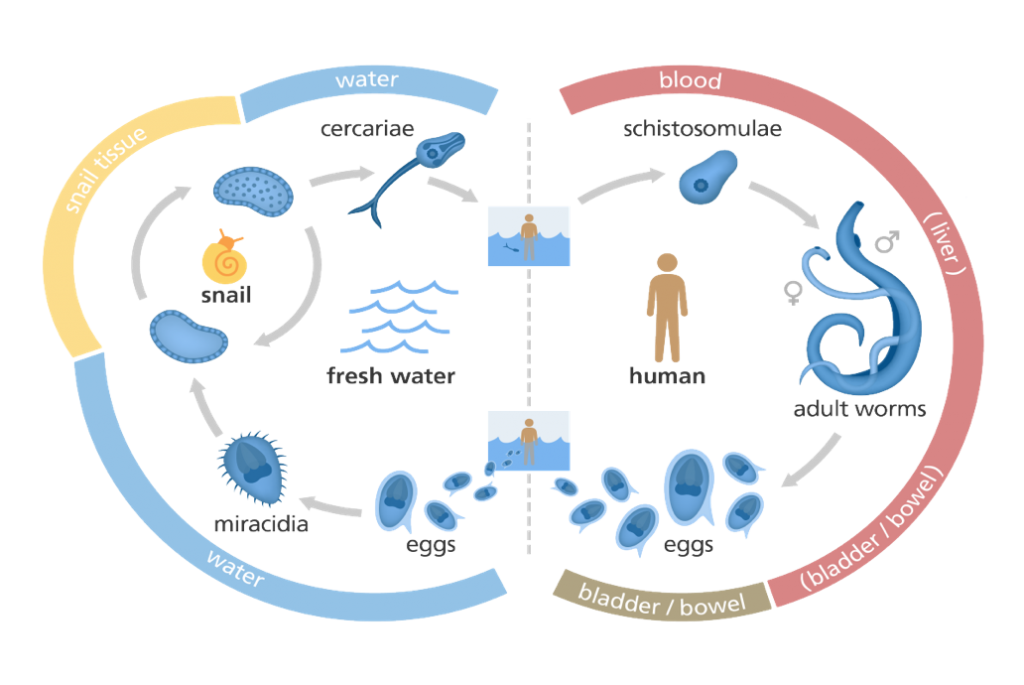
Image sourced from Genome Research Limited
Schistosomiasis is caused by a trematode worm of the Schistosoma (S.) genus, a parasitic blood fluke. During the infectious stages, they are released from water snails in fresh water (WHO 2013). Prolonged infection can result in complex organ manifestations. Intestinal schistosomiasis is caused by S. mansoni and occurs in sSA, the Mediterranean, the Caribbean and South America. S. intercalatum also causes intestinal schistosomiasis and occurs predominantly in Central Africa. Oriental or Asiatic schistosomiasis is caused by the S. japonicum group of parasites (including S. mekongi) and is endemic to South-East Asia. Finally, S. haematobium causes urinary schistosomiasis and is also implicated in genital disease. S. haematobium infection often results in formation of lesions within the vaginal tract of women, often rendering them more susceptible to HIV-1 coinfection. This species is endemic to Africa and the Mediterranean. Despite the geographical nature of each disease, none of the major schistosome species are thought to be contained and have been demonstrated to continually increase their global footprint to new regions of the world. As recently as August 2018, S. haematobium has been shown to have increased its geographical footprint outside of Africa and into Southern Europe by infecting a strain of snail long thought to be non-permissive to this parasite. The life cycle of schistosomes starts with the release of cercariae by freshwater snails. Human infection occurs when cercariae actively penetrate the skin and enter the body. The larvae invade host blood vessels, develop into adult schistosomes and multiply. Female, mature schistosomes release eggs into the bloodstream, which may then be excreted through urine or faeces and contaminate water sources, completing the schistosome life cycle. Eggs that are not excreted can become lodged in human tissue and trigger immune reactions that result in clinical disease.
